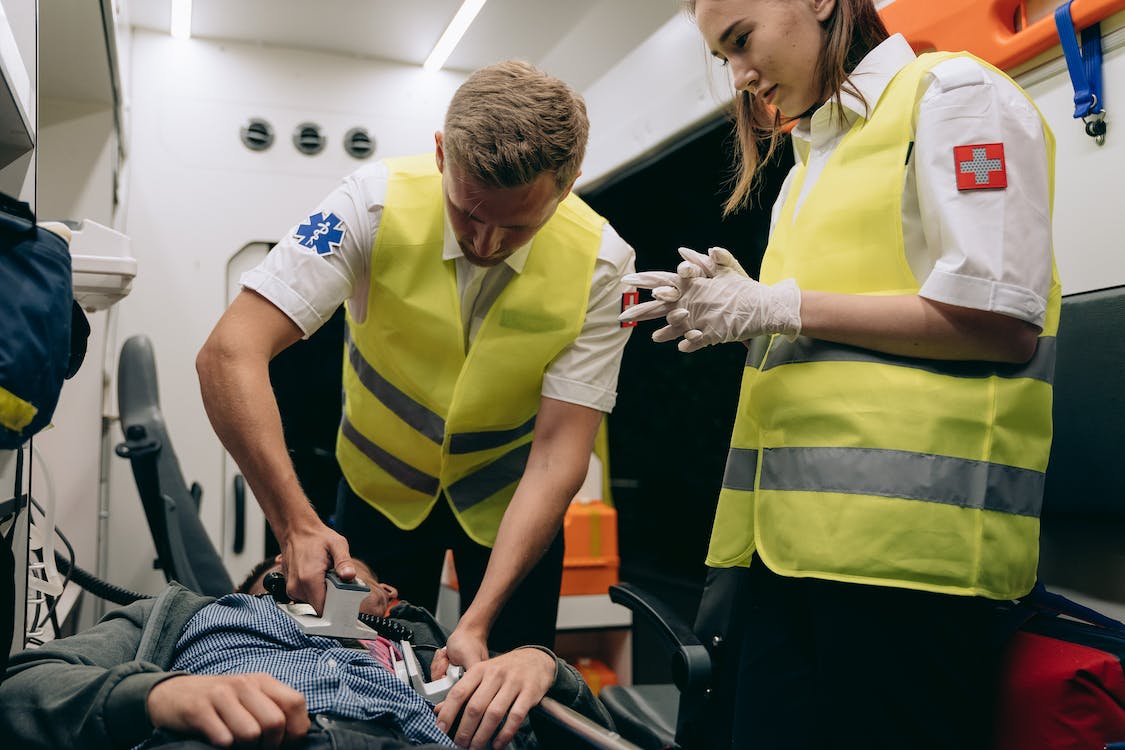
About Course
FIRST AID and AED
First aid is the first and immediate assistance given to any person with either a minor or serious illness or injury, with care provided to preserve life, prevent the condition from worsening, or to promote recovery until medical services arrive. First aid is generally performed by someone with basic medical training. Mental health first aid is an extension of the concept of first aid to cover mental health, while psychological first aid is used as early treatment of people who are at risk for developing PTSD.Conflict first aid, focused on preservation and recovery of an individual’s social or relationship well-being, is being piloted in Canada.
There are many situations that may require first aid, and many countries have legislation, regulation, or guidance, which specifies a minimum level of first aid provision in certain circumstances. This can include specific training or equipment to be available in the workplace (such as an automated external defibrillator), the provision of specialist first aid cover at public gatherings, or mandatory first aid training within schools. Generally, five steps are associated with first aid:
- Assess the surrounding areas.
- Move to a safe surrounding (if not already; for example, road accidents are unsafe to be dealt with on roads).
- Call for help: both professional medical help and people nearby who might help in first aid such as the compressions of cardiopulmonary resuscitation (CPR).
- Perform suitable first aid depending on the injury suffered by the casualty.
- Evaluate the casualty for any fatal signs of danger, or possibility of performing the first aid again.
ABCDE method
- Airway (clearing airways): If the patient responds in a normal voice, then the airway is patent. Airway obstruction can be partial or complete. Signs of a partially obstructed airway include a changed voice, noisy breathing (e.g., stridor), and an increased breathing effort. With a completely obstructed airway, there is no respiration despite great effort (i.e., paradox respiration, or “see-saw” sign). A reduced level of consciousness is a common cause of airway obstruction, partial or complete. A common sign of partial airway obstruction in the unconscious state is snoring. Untreated airway obstruction can rapidly lead to cardiac arrest. All health care professionals, regardless of the setting, can assess the airway as described and use a head-tilt and chin-lift maneuver to open the airway. With the proper equipment, suction of the airways to remove obstructions, for example, blood or vomit, is recommended. If possible, foreign bodies causing airway obstruction should be removed. In the event of a complete airway obstruction, treatment should be given according to current guidelines. In brief, first aid for conscious patients of choking uses anti-choking procedures (usually five back blows, alternating with five abdominal thrusts, or alternating with five chest thrusts in the case of the pregnant and the very obese victims, until the obstruction is relieved). If the victim becomes unconscious, it is required, according to guidelines, to call for help to emergency medical services and to any useful people that is near and to start cardiopulmonary resuscitation for unconscious victims of choking (attempting to extract the object, with extreme care, from time to time). In modern times, some commercial anti-choking devices have been invented to simplify the solution of choking. Importantly, high-flow oxygen should be provided to all critically ill persons as soon as possible.
- Breathing (ensuring respiration): In all settings, it is possible to determine the respiratory rate, inspect movements of the thoracic wall for symmetry and use of auxiliary respiratory muscles, and percuss the chest for unilateral dullness or resonance. Cyanosis, distended neck veins, and lateralization of the trachea can be identified. If a stethoscope is available, lung auscultation should be performed and, if possible, a pulse oximeter should be applied. Tension pneumothorax must be relieved immediately by inserting a cannula where the second intercostal space crosses the midclavicular line (needle thoracocentesis). Bronchospasm should be treated with inhalations. If breathing is insufficient, assisted ventilation must be performed by giving rescue breaths with or without a barrier device. Trained personnel should use a bag mask if available.
- Circulation (internal bleeding): The capillary refill time and pulse rate can be assessed in any setting. Inspection of the skin gives clues to circulatory problems. Color changes, sweating, and a decreased level of consciousness are signs of decreased perfusion. If a stethoscope is available, heart auscultation should be performed. Electrocardiography monitoring and blood pressure measurements should also be performed as soon as possible. Hypotension is an important adverse clinical sign. The effects of hypovolemia can be alleviated by placing the patient in the supine position and elevating the patient’s legs. An intravenous access should be obtained as soon as possible and saline should be infused.
- Disability (neurological condition): The level of consciousness can be rapidly assessed using the AVPU method, where the patient is graded as alert (A), voice responsive (V), pain responsive (P), or unresponsive (U). Alternatively, the Glasgow Coma Score can be used.16 Limb movements should be inspected to evaluate potential signs of lateralization. The best immediate treatment for patients with a primary cerebral condition is stabilization of the airway, breathing, and circulation. In particular, when the patient is only pain responsive or unresponsive, airway patency must be ensured, by placing the patient in the recovery position, and summoning personnel qualified to secure the airway. Ultimately, intubation may be required. Pupillary light reflexes should be evaluated and blood glucose measured. A decreased level of consciousness due to low blood glucose can be corrected quickly with oral or infused glucose.
- Exposure (overall examination, environment): Signs of trauma, bleeding, skin reactions (rashes), needle marks, etc., must be observed. Bearing the dignity of the patient in mind, clothing should be removed to allow a thorough physical examination to be performed. Body temperature can be estimated by feeling the skin or using a thermometer when available.
Student Ratings & Reviews
